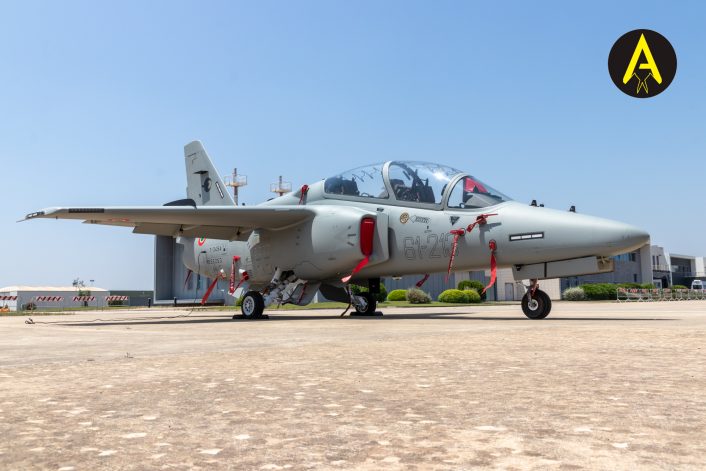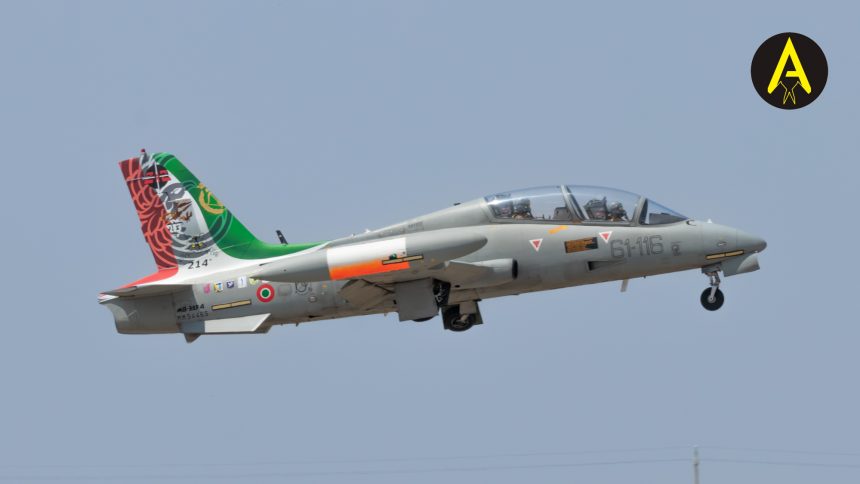The Italian Air Force celebrated the phase out of the T-339A jet trainer and the phase in of its successor, the T-345A.
The Italian Air Force said goodbye to its long-standing Aermacchi MB-339A jet trainer during a ceremony at Lecce-Galatina Air Base on Jun. 12, 2025. The event included both the phase out of the T-339A (as the MB-339A is designated by the Italian MoD) and the phase in of its successor, the Leonardo T-345A.
The ceremony
The ceremony was attended by the Chief of Staff of the Italian Air Force, Lt. Gen. Antonio Conserva, and the Commander of the Training Schools and 3rd Air Region of the Italian Air Force, Lt. Gen. Silvano Frigerio, as well as the Managing Director of Leonardo’s Aeronautic Division, Stefano Bortoli. Current and past pilots, technical officers and military and civilian maintainers, who worked on the aircraft during its over 40 years of activity, were also invited.
A special livery highlighted the importance of this agile jet trainer for the service, with the emblems of all the units that employed it. The tail, painted with the colors of the Italian flag, prominently features the 61° Stormo’s (61st Wing) emblem, with the eagle which embraces the bow of Diana the Huntress, as well as the emblems of the three squadrons which employed it at Galatina AB: the 212°, 213° and 214° Gruppo.
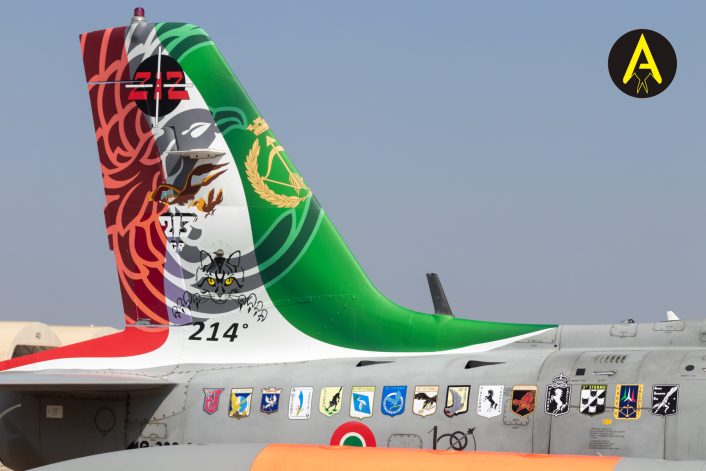
Following the welcoming remarks, a formation of three T-345As and one T-339A with the special livery took off for a flypast. The four-ship formation conducted two formation passes, before the T-339A symbolically left the formation to represent the “change of the guard” between the two trainers.
The phase-out of the #T339A and phase-in of the #T345A at Galatina Air Base (Lecce, Italy) represented a key milestone for the @ItalianAirForce and a valuable opportunity to showcase #Leonardo’s integrated training ecosystem, focused on #innovation, efficiency, and readiness.
We… pic.twitter.com/oM0fi3nlmF
— Leonardo Aeronautics (@LDO_Aeronautics) June 12, 2025
“The T-339A has trained many generations of pilots, making the history of training and of the Air Force,” Gen. Conserva said during his speech. ”Emotion and sadness because as 339A it ends its educational task but a farewell sweetened by the fact that it will continue its training mission as 339CD, just as it will continue to carry our tricolor throughout the world in its 339PAN version.”
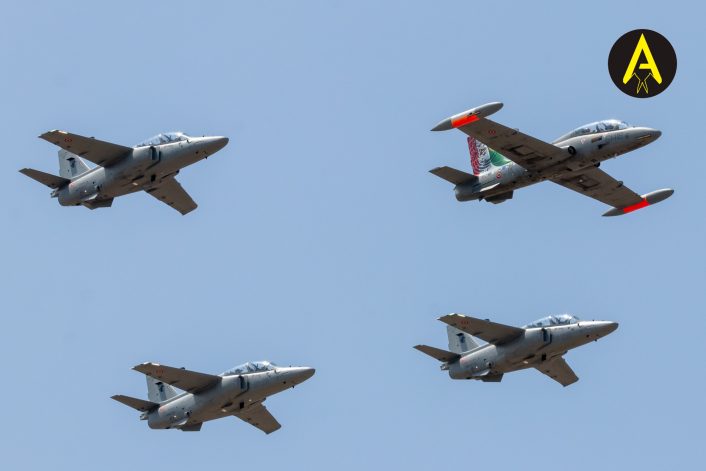
In fact, while the standard T-339A/MB-339A is now being retired, the modified AT-339A/MB-339PAN will continue to fly with the Frecce Tricolori aerobatic team until it is replaced by the new T-346. Similarly, the upgraded FT-339C/MB-339CD will continue to fly until 2030, when it also will be replaced by the T-345A.
We were honoured to welcome the Chief of Staff of the @ItalianAirForce, Lt. Gen. Antonio Conserva, and the Commander of the Training Schools and 3rd Air Region of the Italian Air Force, Lt. Gen. Silvano Frigerio, to #Leonardo’s stand during the official induction ceremony of the… pic.twitter.com/r26sJaz6VT
— Leonardo Aeronautics (@LDO_Aeronautics) June 12, 2025
“We are happy to welcome the arrival of its successor, the best basic and basic-advanced trainer from now until the next 40 years, an aircraft with very low costs characterized by the ability to train our students in a completely digital environment preparing them, from the early stages, for future 4th, 5th and 6th generation fighters,” said Gen. Conserva about the new T-345A. “A further qualitative leap that places us as undisputed leaders in the pilot training sector in Italy, Europe and the world.”

The mention of the 6th generation fighters is not casual, as the Italian Air Force is also starting to look at the future training requirements for the pilots that will fly the Global Combat Air Programme’s (GCAP) manned fighter. The modernization was also highlighted by the Managing Director of Leonardo’s Aeronautic Division, Stefano Bortoli.
“The M-345 is the result of Leonardo’s consolidated experience in the military trainer sector, the result of the success of aircraft such as the SIAI-Marchetti SF-260, the Aermacchi MB-326 and the Aermacchi MB-339,” said Bortoli. “The latter, in particular, has been in service for 45 years, training Italian and foreign military pilots and colouring the skies around the world with the Italian flag of the National Aerobatic Team, which will very soon adopt Leonardo’s M-346 as its new aircraft. Thanks to the introduction of the M-345 and its integration into the Armed Forces’ training syllabus, which already includes the M-346 for subsequent training phases, the Italian Air Force will be able to boast the most modern fixed-wing military training system in Europe.”
Visualizza questo post su Instagram
The ceremony included some notable moment, like the “passing of the baton” between an “older” T-339A pilot and a “younger” T-345A pilot and the presentation of the T-339A’s flight stick diplay, which will be put among the Wing’s memorabilia in the command’s building. Also, although he could not be present on site, the first test pilot of the MB-339, Franco Bonazzi, recounted some of his memories about the first flights of the aircraft.
A Galatina (LE) il T-339A lascia il posto al #T345A, nuovo trainer dell’#AeronauticaMilitare.
Un passaggio di testimone reso ancora più simbolico con il videomessaggio del 1° collaudatore dell’MB.339 Comandante Franco Bonazzi #latuasquadrachevola #M345 pic.twitter.com/C6d7w06lYJ
— Aeronautica Militare (@ItalianAirForce) June 12, 2025
According to the service, in July 2025 the first students will start to train on the T-345A, while the T-339A’s operations will fade out and the 61st Wing will continue its training activities with the T-345A, the FT-339C and the T-346A. In future, the Wing will eventually transition to a two-aircraft fleet with only the T-345 and T-346.
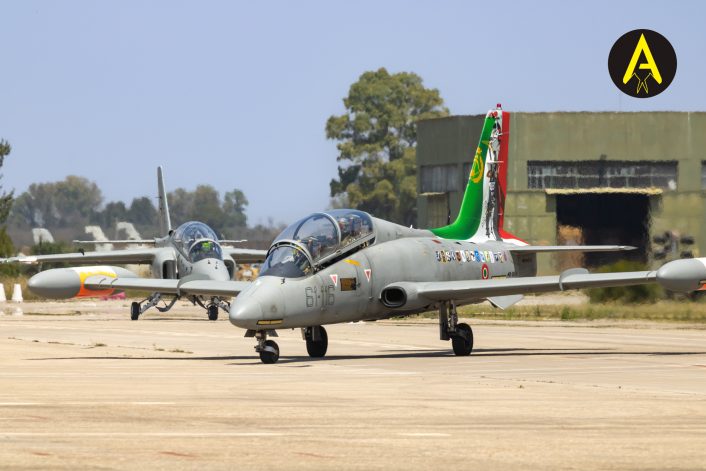
The MB-339A/T-339A
The MB-339 was born as a replacement for the MB-326 and designed with almost all Italian technology, with the exception of the Rolls-Royce Turbo Viper 632 engine. The MB-339 flew for the first time in 1976 and was introduced in service in 1981, immediately demonstrating great capabilities both as advanced trainer and as ground attack aircraft. Compared to the MB-326, the MB-339 has more power, better maneuverability and control’s precision. The forward part is also completely redesigned to have different heights for the pilot and instructor, allowing a better visibility from the rear seat.
Oggi, a Galatina (LE), il passaggio di consegne tra il T-339A, il leggendario “Macchino”, e il #T345A, il nuovo velivolo addestratore dell’#AeronauticaMilitare.
Un evento che segna la fine di un’era e l’inizio di un nuovo capitolo per l’addestramento al volo della Forza Armata pic.twitter.com/gxDm2XJ1fh
— Aeronautica Militare (@ItalianAirForce) June 12, 2025
The MB-339 became even more popular thanks to its adoption by the Frecce Tricolori National Aerobatic Team in 1982. The Frecce Tricolori use a modified version of the MB-339A, called MB-339PAN, which features key modifications, such as the installation of a smoke system and the removal of the tip tanks, which can be reinstalled for extended-range ferry missions such as the North American Tour 2024.
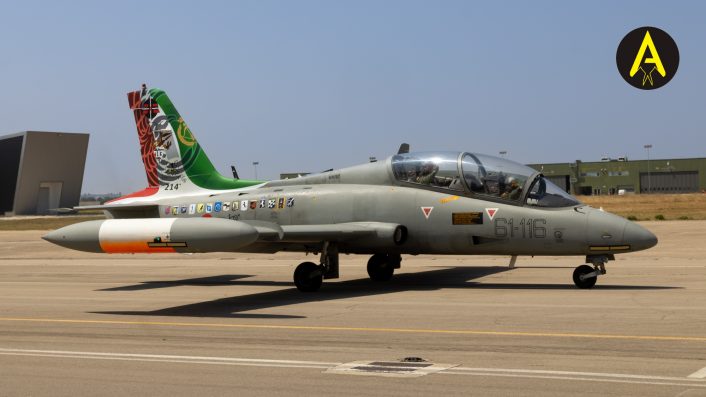
The aircraft also had good commercial success outside of Italy, and has been in service in Argentina, Peru, Malaysia, New Zealand, Nigeria, United Arab Emirates, Eritrea and Ghana. Some MB-339s from New Zealand now found a second life with Draken International, which uses them to support training of allied air forces.
The MB-339 “Macchino” has also been for a long time a synonym of the 61° Stormo where, in the last 40 years, it graduated 2,500 pilots and flew for 400,000 hours. Even if it’s closing to the end of its service life, the MB-339 continues to demonstrate itself as an exceptional, safe, reliable machine, and is still used in the “analog” A variant for the Phase 2 training and in the “digital” CD variant for the Phase 3.
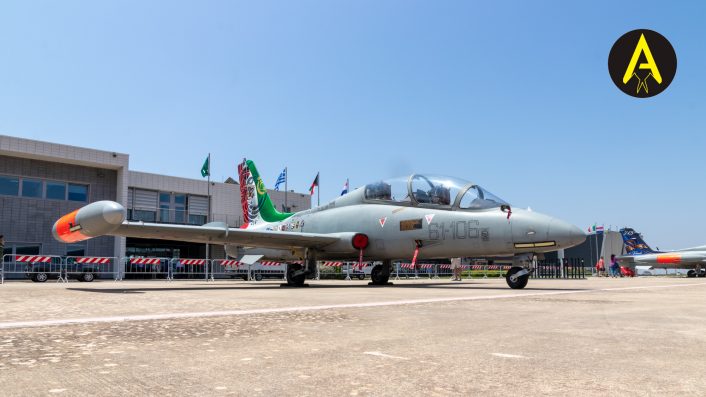
The M-345/T-345
The MB-339 is now being replaced by the T-345 High Efficiency Trainer, the new basic jet trainer of the Italian Air Force which will gradually replace the entire MB-339 fleet, beginning from the A variant and later continuing with the CD variant. In fact, thanks to its characteristics, the aircraft can be used for the entire training syllabus, from the Primary Pilot Training to the Specialized Pilot Training.
Diamo il benvenuto al nuovo velivolo addestratore, che entra in servizio al 61° Stormo.
Il #T345A, prodotto da #Leonardo e dotato di avionica moderna, tecnologia all’avanguardia, elevata efficienza e flessibilità operativa, è destinato all’addestramento dei piloti militari pic.twitter.com/684Z3mZbxE
— Aeronautica Militare (@ItalianAirForce) June 12, 2025
The T-345 will bring multiple advantages. Similarly to the M346, the new aircraft will be part of an integrated netcentric system, which will allow to shrink the time needed for the training while improving its quality and efficiency. The T-345 trainer offers performance typical of a jet aircraft, such as the maximum altitude and speed, with operational costs comparable to the ones of a turboprop aircraft.
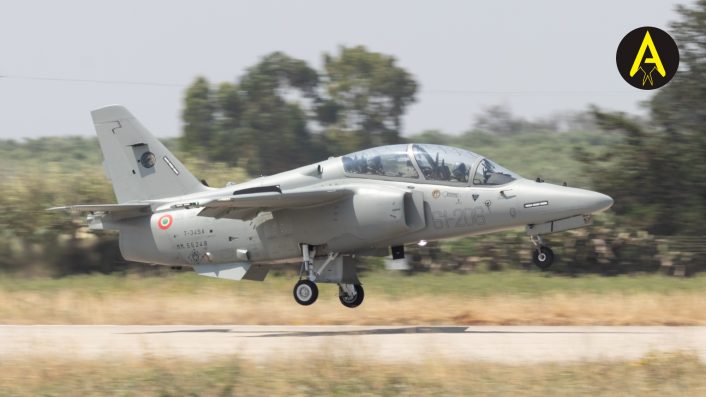
The T-345 is equipped with simple and essential onboard systems, which require minimum maintenance and allow the maximum safety and reliability. The Williams FJ44-4M-34 turbofan engine is equipped with a modern digital control system and provides a good thrust with low fuel consumption. The acquisition costs are comparable to the ones of turboprop trainers, allowing a long service life of 15,000 flight hours.
Today, #Leonardo is taking part in the ceremony marking the phase-out of the #T339A and the phase-in of the #T345A at the @ItalianAirForce’s Galatina Air Base (Lecce, Italy), home of the 61st Wing. During the event, we will showcase our digital training solutions for the T-345A.… pic.twitter.com/rftuTUy5iN
— Leonardo Aeronautics (@LDO_Aeronautics) June 12, 2025
The swept high wing provides a greater maneuverability and an easier recovery from dangerous attitudes, while its profile also creates a higher lift. The aircraft is equipped with the latest technologies, such as touchscreen multi-functional displays, exposing the students to these technologies, similar to the ones of front-line aircraft, early in the training, so they can gradually improve their competencies with such advanced avionics before reaching the OCUs.
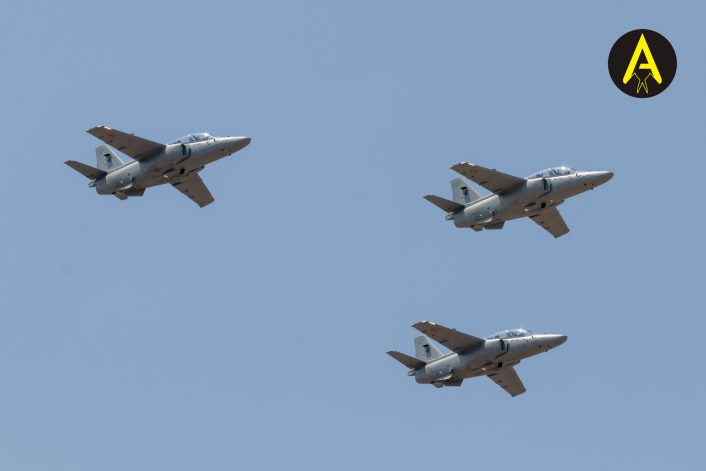
The introduction of the T-345 will consolidate even more the new training model of the Italian Air Force and will allow a more fluid transition from basic training to advanced training. In fact, as we mentioned, the T-345 can be seen as an integrated training system similar to the one of the T-346, as they are both based on the same logic but with the latest technological advances for both avionics and ground training aids.
Allowing students to immediately get in touch with the most modern technologies and avoiding the transition to another aircraft, even if highly similar, for the Phase III training, will improve the efficiency and reduce even more the period required for the training.
